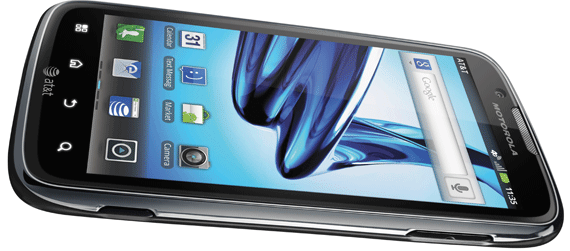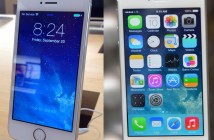
Motorola introduced the first Atrix just half a year ago, and it is a pretty impressive device – at the time it was even more impressive with its dual core processor, big 4 inch display and the ability to run a secondary Linux-based OS (which has a special desktop Firefox build with support for Flash and any other plugins/add-ons you might need) that could be used with one of the two special docks, which transformed the smartphone into a full-fledged netbook or even desktop replacement.
And now, it’s time for the successor to take over – at least that’s what Motorola seems to think. Yes, the Atrix 2 is already here, bringing some improvements to the gadget, but not enough to be a real game changer like its predecessor.
On the outside, the new Atrix 2 looks pretty much the same as the old model: sure the design has changed slightly (for the better in my opinion) and is now rounder and sleeker, but overall, you can see it’s an Atrix from a mile away. The only change noticeable on the outside is the display – Motorola has put a very nice 4.3 inch unit this time, with a resolution of 960×540 pixels and no PenTile matrix, and it definitely looks better than the one on the Atrix 4G and the Droid 3.
Despite the increase in screen size, the Atrix 2 isn’t that much bigger than the first model – thanks to a tighter fit of the display in the body, the phone is just a couple of millimeters longer and wider, but not enough to make a difference. The phone actually resembles Sprint’s Photon 4G a lot – I did say it was an improved Atrix 4G, but I didn’t expect Motorola to think the same :-).
The other major (or minor, depending how you look at it) changes are on the inside: Motorola traded in the first generation Tegra 2 for a TI OMAP 4, which runs at the same 1 GHz per core, however – a weird choice, indeed. The OMAP 4 does theoretically have a higher performance thanks to its improved memory controller, but it’s definitely not enough to feel it in real use. At least it’s been proven to consume less power than NVidia’s solution. The 1 GB of RAM sets the distance between the Atrix 2 and Atrix 4G – the extra memory definitely helps in intensive apps and with heavy multitasking.
The camera is now an 8 megapixels unit, which doesn’t make much of a difference in quality, and more importantly, the fingerprint reader, which was pretty good and a unique feature on the Atrix 4G is now gone – bye, bye enhanced security for those who need it. All the other specs remain pretty much the same, and the phone even runs Android 2.3 Gingerbread, which the Atrix 4G got through an upgrade – there’s really not much incentive to upgrade to the second Atrix, unlike the case with the second and third Droids. But once it goes on sale, the Atrix 2 will obviously be a better choice than the Atrix 4G, so if you’re in the market for a new smartphone, it might be worth waiting for it.
Motorola Atrix 2 Specs:
- UMTS 850/1900/2100
- GSM 850/900/1800/1900 4G HSPA+ 21 Mbps (Category 14)
- 1 GHz dual-core processor
- Internal memory: 8 GB ROM, 1 GB RAM, 2 GB microSD™ card (expandable to 32GB)
- Android 2.3 (Gingerbread)
- 4.3-inch qHD screen 960x540TFT, with more than 500,000 pixels for sharper, clearer display
- 8 MP camera and LED flash
- Front-facing camera
- 1080p HD video capture, 30 frames per second playback
- On Device Encryption (ODE) and Enhanced Exchange ActiveSync® (EAS)
- IPsec VPN
- Lapdock 100 Accessory



